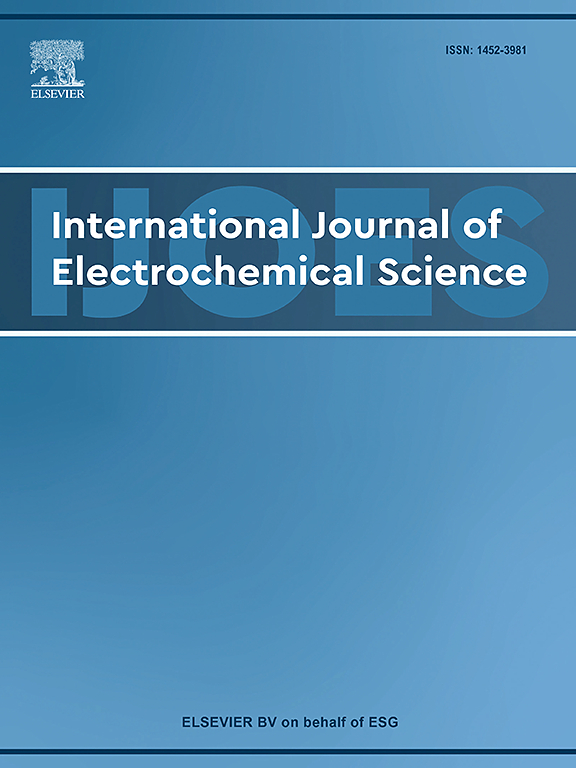State of health and remaining useful life estimation of lithium-ion battery based on parallel deep learning methods
IF 1.3
4区 化学
Q4 ELECTROCHEMISTRY
International Journal of Electrochemical Science
Pub Date : 2025-02-28
DOI:10.1016/j.ijoes.2025.100988
引用次数: 0
Abstract
Accurate estimation of state of health (SOH) and remaining useful life (RUL) is the key to efficient and safe utilization of lithium-ion batteries. Neural networks are widely used to estimate SOH and RUL of lithium-ion batteries due to their strong nonlinear fitting, adaptive and self-learning abilities. Convolutional neural networks (CNN) could effectively extract the key features and recurrent neural networks (RNN) have excellent ability to capture time information in series data, but the traditional series models combining CNN and RNN may cause information leakage in time series data due to the lack of time association learning ability in CNN. In this paper, we propose a novel parallel architecture integrating temporal convolutional networks (TCN) with long short-term memory (LSTM) to address the temporal information leakage limitation in conventional series models. This synergistic design enables simultaneous extraction of spatial degradation features through TCN and dynamic temporal dependencies via LSTM, significantly enhancing SOH and RUL estimation accuracy for lithium-ion batteries compared to sequential CNN-RNN approaches. The comparison of SOH and RUL estimation performances between series and parallel models is conducted using public battery datasets sourced from the National Aeronautics and Space Administration (NASA) and Oxford university. The improvement of SOH estimation accuracy across the entire dataset is more than 29 % in dataset 1 and 37 % in dataset 2. For RUL estimation, the parallel models could achieve comparable performance to series models, with an acceptable increase in time consumption.
基于并行深度学习方法的锂离子电池健康状态及剩余使用寿命估算
准确估计锂离子电池的健康状态(SOH)和剩余使用寿命(RUL)是锂离子电池高效、安全利用的关键。神经网络具有较强的非线性拟合、自适应和自学习能力,被广泛应用于锂离子电池的SOH和RUL估计。卷积神经网络(Convolutional neural network, CNN)可以有效提取关键特征,而递归神经网络(recurrent neural network, RNN)在序列数据中具有出色的时间信息捕获能力,但传统的将CNN与RNN相结合的序列模型由于CNN缺乏时间关联学习能力,可能会导致时间序列数据中的信息泄露。在本文中,我们提出了一种将时间卷积网络(TCN)与长短期记忆(LSTM)相结合的新型并行架构,以解决传统序列模型中时间信息泄漏的限制。这种协同设计可以通过TCN同时提取空间退化特征,通过LSTM同时提取动态时间依赖性,与顺序CNN-RNN方法相比,显著提高了锂离子电池SOH和RUL估计的精度。利用来自美国国家航空航天局(NASA)和牛津大学的公开电池数据集,对串联和并联模型之间的SOH和RUL估计性能进行了比较。数据集1的SOH估计精度提高了29 %,数据集2的SOH估计精度提高了37 %。对于RUL估计,并行模型可以达到与串行模型相当的性能,但时间消耗的增加是可以接受的。
本文章由计算机程序翻译,如有差异,请以英文原文为准。
求助全文
约1分钟内获得全文
求助全文
来源期刊
CiteScore
3.00
自引率
20.00%
发文量
714
审稿时长
2.6 months
期刊介绍:
International Journal of Electrochemical Science is a peer-reviewed, open access journal that publishes original research articles, short communications as well as review articles in all areas of electrochemistry: Scope - Theoretical and Computational Electrochemistry - Processes on Electrodes - Electroanalytical Chemistry and Sensor Science - Corrosion - Electrochemical Energy Conversion and Storage - Electrochemical Engineering - Coatings - Electrochemical Synthesis - Bioelectrochemistry - Molecular Electrochemistry

 求助内容:
求助内容: 应助结果提醒方式:
应助结果提醒方式:


